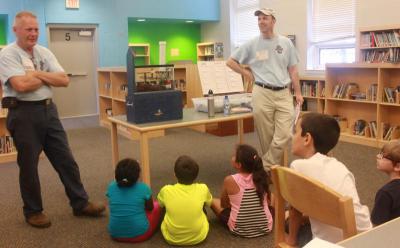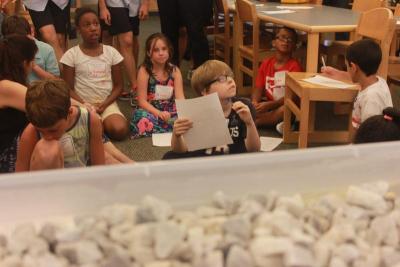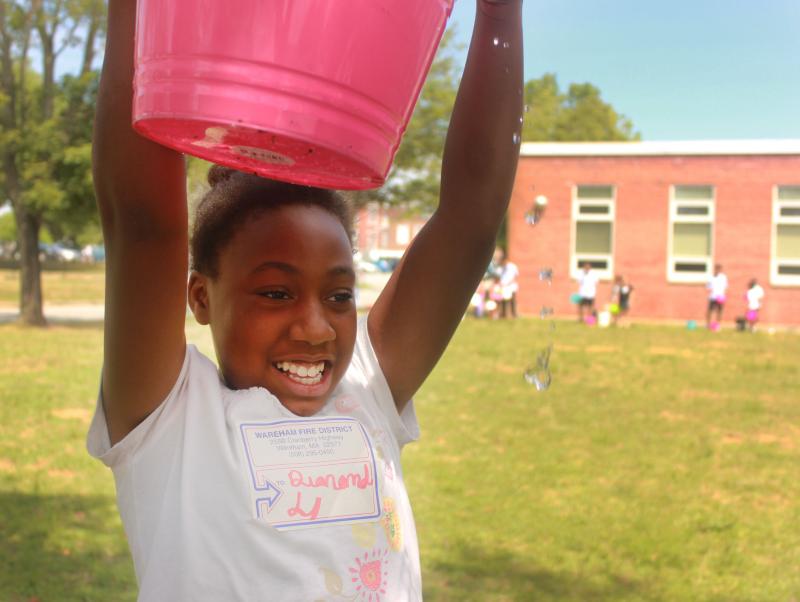Some splashes, lots of information: Wareham Water at CARE program




When it comes to water knowledge, Wareham kids are thirsty to learn more.
Andrew Reid and Gregg Donahue from the Wareham Water Department spent two hours teaching children and Chinese exchange students about the town's water system on Monday.
By the end of the session, the children and students knew the cost of a gallon of tap water versus a gallon of bottled water, how much a gallon of water weighs and how many gallons of water a single person uses in a day on average.
The program was put together because the department recently secured a $55,000 Environmental Protection Agency grant for outreach. Reid is currently researching the most effective ways of communicating with residents and sending alerts.
“It's something we've been meaning to do more community outreach,” said Reid, who is the department's director.
Reid and Donahue set up their presentation at the Wareham Middle School library that children from the CARE (Community, Academic, Recreation and Enrichment) program attended.
Once they learned that they'd be playing with water outside, they were excited.
First, Reid quizzed them on their knowledge about water. He started off easy: “What's your favorite thing about water?”
Some answered “drinking it,” others, “playing around in it.”
He handed out a pop quiz and one of the questions stirred a lot of debate between the children: “Which uses more water? Washing machines, showers, or irrigation?”
Most thought the cost per a gallon of tap water was $5, that drinking water came from rivers, and were unsure how many pounds a gallon of water weighs.
Reid and Donahue took the children outside and demonstrated the answers with buckets and coins.
A gallon of tap water costs 5 cents, while a gallon of bottled water would cost around $4. A gallon of water weighs 8.3 pounds, and an average person uses 55 to 65 gallons of water per day. Water comes from aquifers underground, and the most water is used for irrigation (gardening).
With some relay races involving hand pumps, water, and buckets, and some splashes here and there, Reid and Donahue wrapped up the event by handing out goodie bags to the children that contained tips and tricks to conserve water.
On Tuesday, the education continued when a group third and fourth grade student, along with Chinese exchange students, learned what happens after the water they use disappears down the drain.
Led by Water Pollution Control Director Guy Campinha, students toured the town's sewer treatment plant to see how dirty water is treated before it's pumped out into the Cape Cod Canal.
Campinha gave lessons on the importance of being aware of what should and should not be poured down the drain, such as fertilizers and grease, which up the amount of nitrogen water and clog sewer pipes leading to costly repairs, respectively.
"Every time you do something when it comes to water, think about what the impact will be on the environment," said Campinha.
Inside the plant's lab, students poured over water samples and slides of microscopic organisms found in water.
"This is so cool!," said third grade student Aidan Hatch looking into the microscope. He added that seeing the samples was one of his favorite parts of the trip.
Campinha said hosting the students was a pleasure.
"It's really important to teach them about water," he said. "At this age, they're eager to learn and water is such an important resource. It's great to see them so excited."
















